|
In the previous post, I made a case for making more informed purchasing decisions with educational money...especially when it comes to purchasing EdTech. The following is a list of some common EdTech products that are purchased by schools and school systems contrasted with lower-cost alternatives that deliver similar, if not identical solutions. 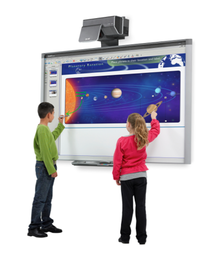 Interactive White Boards Tech Solution ($2,000 to $6,000) Use an interactive white board to allow students and teachers to interact with digital artifacts and display handwriting/highlighting on a single, integrated device. These are often used to display slideshows, enhance digital illustrations, and engage students in interactive games. Popular brands include SmartTech SMART Boards and Promethean Active Boards. While other solutions are available, the costs and benefits are similar. They deliver a great experience in the classroom and have become a staple in many schools. Low Cost Alternative ($185 to $750) Option 1: Use an Apple iPad (mini under $259) paired with Apple TV ($149) and a standard projector (as low as $300 -- but often already available in the classroom). You can achieve similar levels of interactivity with a variety of apps (like Doceri) plus you gain the added benefit of not requiring instructors or students to only interact from the fixed position at the front of the room. Option 2: Use a Chromebook (as low as $149) paired with Chromecast ($35) and a standard projector in a similar fashion as described above (this does eliminate the option for handwriting unless you have a higher priced Chromebook). 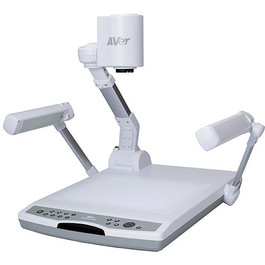 Document Cameras Tech Solution ($350 to $1,200+) Frankly, there has never really been a good reason to purchase an actual document camera. These plug-and-play devices allow teachers and students to display hard copy documents on a digital projector and most will allow you to take snapshots or record annotations in real time (some even record audio now). Low Cost Alternative (Free) Seven years ago you could simply rig a $39 webcam to do the same thing. This is still a viable option, but if you have embraced the aforementioned tablet, streaming, projector model in lieu of an interactive whiteboard, then simply take advantage of the camera is on your tablet. Multiple apps let you stream and capture video/stills from your tablet's camera while displaying the results in real time. In other words, use the camera you already have and don't buy a $1,000 device for negligibly better results. 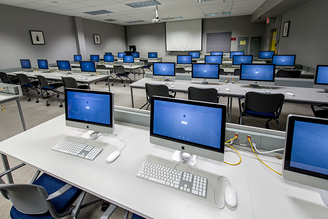 High End Computer Labs Tech Solution ($1,249 to $2,000 per station) Give students access to computers in a lab setting (and give administrators a cool looking lab to show on tours to high profile guests). Low Cost Alternative (varies) There are few reasons for a K-12 school to own a full Mac (or high end PC) lab. This isn't necessarily a complete waste of resources but decision makers need to be absolutely certain that the instructors in the lab have the ability to actually use the equipment on a level that merits the cost. If you are simply interested in web-based applications, general productivity (like word processing and slideshows), and relatively simple photo and video editing, then a Chromebook or iPad lab will be more than adequate and less than a quarter of the cost. NOTE There are a few cases where a high end computer lab is worth the investment, but in those cases, you should be prepared to undertake a substantial investment in software as well. In other words, if you are prepared to pay upwards of $2,000 for machines, you need to understand that it makes no sense to only use the factory installed software. For example, if you are buying a Mac lab for your video production students, you will definitely need to invest in production quality sound and video editing software like Final Cut Pro, Adobe After Effects, and Adobe Audition. 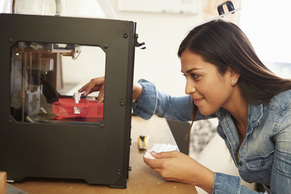 3D Printer Typical Tech Solution ($2,000 to $5,000 per unit) As the maker movement and constructivism continue to grow in popularity, schools everywhere seem engaged in an arms race to ramp up their maker spaces. For many educators, this will be the first time they will consider a 3D printer. To be clear, you can have a GREAT maker space without a 3D printer. However, if you're going to jump into 3D printing, please do your homework. Don't just buy the one of the more popular education brands. Low-Cost Alternative ($500 - $3,000) To be clear, all 3d printers are quirky and I'm beginning to believe that like jet-skis, you always need to own two because one will always be in service. I could write several pages of reviews on various brands of printers, but many tech-heads already have. Rather than doing that, I'll highlight a few nice models to consider at various price points, that I have had a positive personal experience with:
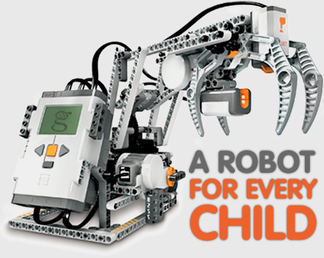 Robotics Don't get me wrong, as a dad, I want my kids to have access to robotics and I hope robotics is used to enhance their experience in the classroom. I don't see as much waste in terms of purchasing the wrong products in this category. However, I do hear many teachers and administrator talk about the prohibitive cost of robotics. Below is a list of low cost robotics you can use in schools. However, please don't make the mistake of thinking you need a "full class set" of each (or any of them). The benefits of group programing and collaboration in problem solving are well documented. I would budget for a 4:1 student to robot ratio depending on the cost of the item. Also, especially in K-5, robots are great station devices and you can reasonably get away with only one or two of any given model for a classroom. Robots to Consider (not an extensive list)
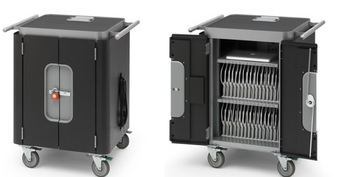 The "Do Not Buy" List Some of these products seem like useful purchases but they are generally collossal wastes of money. They are objects I would definitely not purchase for use in school unless you have an unlimited budget and don't mind buying things that are no where near worth owning.
Obviously this is a limited scope. It is unreasonable to think I could advise on every possible EdTech device out there. Instead, I tried to focus on mistakes I've seen around the country and hopefully this can save you some money! Feel free to offer your own tips and suggestions in the comments section below
I am available to consult if you are considering major EdTech purchases :)
3 Comments
11/16/2022 12:04:53 pm
I have been searching for such an informative post for many days, and it seems my search just ended here. Good work. Keep posting. Thank you for the valuable information, buddy! I will undoubtedly make use of your research resources.
Reply
11/27/2022 01:58:33 pm
I enjoyed reading the article above. It explains everything in detail. The report is fascinating and practical. Thank you, and good luck with the upcoming articles
Reply
11/28/2022 01:03:30 am
Thank you so much for letting me express my feeling about your post. You write every blog post so well. Keep the hard work going, and good luck. I hope to see such a beneficial post ahead.
Reply
Leave a Reply. |
Michael StoneClick here to read about the blog's author. My BooksKeynotesCleveland Rotary Club
Innovating Education Through Community Partners NEA Foundation The Promise of Public Ed Leveraging Teacher Leadership to Increase STEM Education US Senate Briefing The Need for a National Organizing Body of Digital Fabrication NACCE California Symposium Scaling Innovation through Partnerships Volkswagen eLab Ribbon Cutting Why Digital Fabrication can't be an Option NSTA STEM Leadership Developing, Incubating, and Implementing Public/Private Partnerships that Matter Chattanooga Fab Institute Revolutionizing Learning through Digital Fabrication HCDE Future Ready Institute Launch Developing PBL Units with Business Partners STEM Fellows Celebration Community Partnerships for Teacher Leadership TSIN Summit Scaling Innovation in Schools Remake Learning Days Dig Fab in the Community America Achieves Public/Private Partnerships Panel DigiFabCon Chicago Digital Fabrication in the Modern Classroom Redesign for Student Success (San Diego) Scaling Innovation through Digital Fabrication GE Leadership Summit Leveraging Innovative Technologies for Learning Texas Open Innovation Emerging Innovations in Education Indiana University Authentic PBL FFT Leading & Learning Boston, MA Connecting Global Ed reMake Education Summit Keynote National Governor's Asc. Coding with Governors US Dept of Education Round Table with Secretary John King TSIN Summit K-12 Pathways for CS Google Headquarters Ed Foo NASA Headquarters K-12 Education Panel White House Reducing the Racial Gap in Computing Boston Museum of Science Teaching with Toys US Dept of Education MSP CS Proposition Archives
October 2018
|


